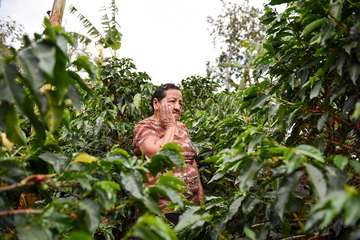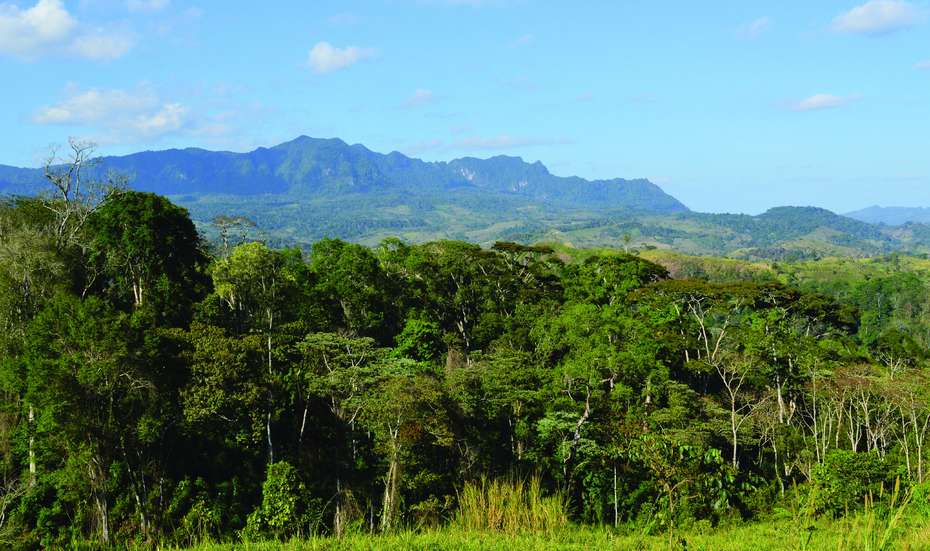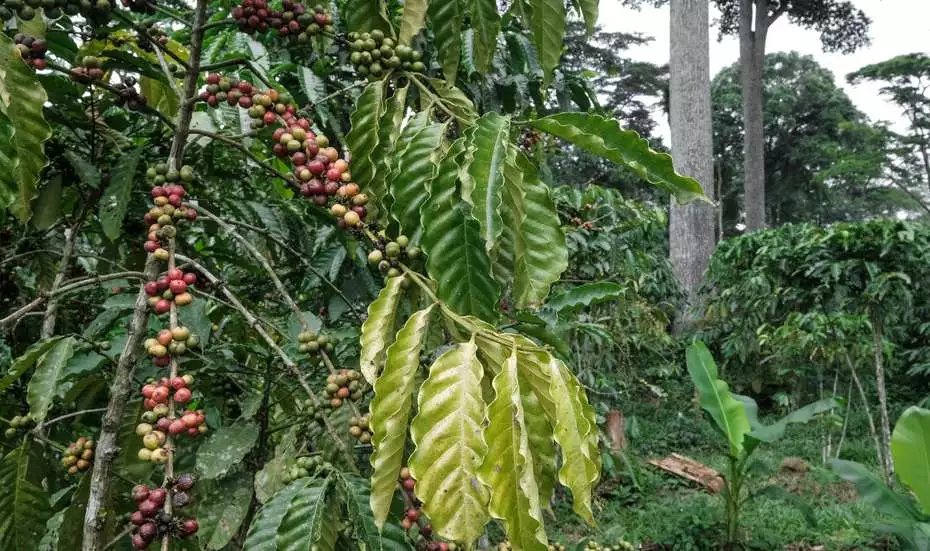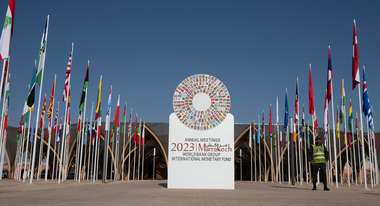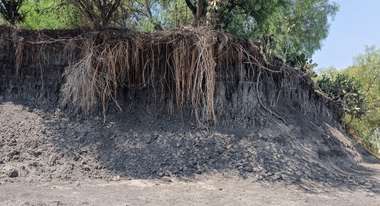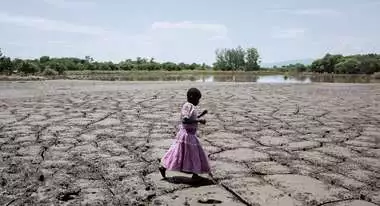Adaptation to Climate Change: EU Regulations Raise the Stakes for Coffee Companies
EU regulations on deforestation-free value chains aim to make coffee production more sustainable. But satellite monitoring is not without problems. Small scale producers could end up on the losing side.
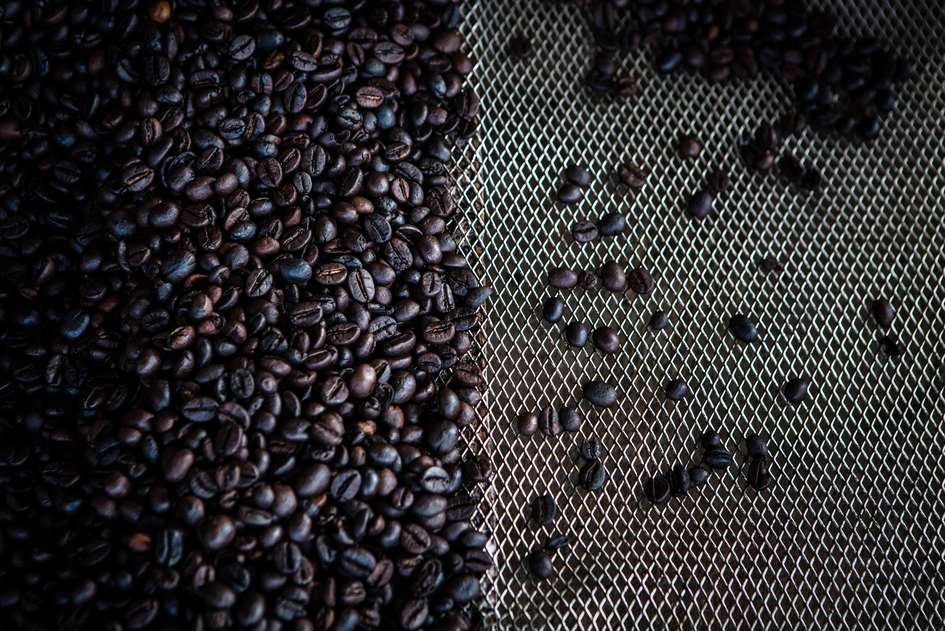
Global warming already results in a shift of climate and vegetation zones on the planet and will doubtless lead to further shifts in the coming decades – usually towards the North, but also to higher altitudes. However, some plants will also move downhill, where more water is available. Coffee plantations, too, are affected by such shifts; however, well-meaning EU support could have negative effects for coffee farmers.
Very early in my career, I was invited to a high-level meeting of coffee industry representatives. My task was to present the results of one of our first climate impact studies for coffee. Our results clearly showed a loss of available area and high risks for all coffee zones in Guatemala. I clearly remember the response of one the most senior people in the room: “There will always be someone who produces coffee. Climate change is a problem for smallholders but not for the industry.”
Not anymore. The new EU Regulation on Deforestation-Free Products (EUDR) could make adaptation to climate change mandatory for coffee companies as well. The title of the regulation is clear about its intentions: Prevent coffee from deforested plots from entering the European market. But it can be argued that it will make farm level adaptation to climate change not only harder but also inevitable for coffee companies.
Of course, in the confines of a corporate highrise in Hamburg, it is all too easy to think of coffee as a mere number which can be substituted by other numbers at the click of a button. But I’ve also come across the other extreme which considers climate change a problem for the natural environment. A lot of research has gone into finding out how climate affects species, or how quickly they can adapt through evolutionary processes. Global climate models tend to agree on the direction of change for temperature, but are highly uncertain about changes in precipitation. These studies usually show that biomes shift either in latitude towards the poles or in altitude. Precipitation shifts often cancel each other out when multiple models are considered. Part of the problem is that temperature is the decisive variable for agriculture in temperate zones, while we forget that tropical societies divide their year into dry and wet seasons.
The fact is: Coffee is a plant produced by people in societies. To understand the impact of climate change, we must take a systemic view rather than focusing only on plant, producer or trade models. Coffee is produced using either the Robusta or the Arabica varieties. Arabica is the great-tasting variety that makes for a delicious cup, Robusta its productive sibling. Plantations remain productive for 20 to 50 years so that any tree planted today will bear the full brunt of global warming.
Both species are highly sensitive to climate change but for different reasons. Arabica originates from Ethiopian highlands and requires a cool climate. With global warming, Arabica production is pushed up the hillsides until no land remains. Robusta can tolerate much higher temperatures but for full productivity needs abundant rainfall. The increasing energy content of the atmosphere results in more extreme water cycles and less reliable rainfalls, making Robusta production increasingly risky for farmers.
The good news for coffee farmers is that global demand for coffee continues to grow by 20% per decade. Coffee is estimated to generate $200 billion in annual retail sales, supporting countless jobs. In the North coffee houses are an integral part of the economy and demands for higher quality support prices. Coffee consumers are increasingly willing to pay a little extra for their coffee if this makes it more sustainable.
Deforestation in Honduras
But the market is tough, many coffee farmers suffer from malnutrition, lack of access to medical care and educational opportunities. The reality of coffee production often deviates from romanticized claims of advertisers: Mechanized mega estates in Brazil, over-exploited groundwater in Vietnam or deforestation in Honduras are commonplace but rarely seen on TV screens. According to recent research, coffee trade from Honduras is the second largest source of imported attributable deforestation in Germany after palm oil from Indonesia.
In response, the groundbreaking EU Regulation on Deforestation-Free Products (EUDR) stipulates that any product which comes from a plot of land where deforestation has recently occurred will be prohibited from entry to the European market. The EUDR entered into force on June 29, 2023. 18 months later, all firms selling coffee, soy, beef, palm oil, wood, cocoa, and rubber in the EU must have credible solutions in place to trace these commodities, geolocate their areas of production and sourcing, and conduct rigorous deforestation analysis.
From an emissions reduction perspective, the argument is clearly correct: Deforestation is the largest source of greenhouse gas emissions in the coffee sector. Unfortunately, there may be unintended consequences to adaptation. First, mandatory monitoring of EUDR compliance with satellite systems makes sourcing from producers with high shade cover risky for companies. This market signal could discourage diverse and dense shade cover as a key adaptation measure for coffee. Second, the entry of new producers into the market will be riskier for EU importers, tying them to existing producers in a growing coffee market and creating a need to keep these profitable.
The EUDR and its proponents offer an all-too-simple solution for monitoring compliance with zero-deforestation: For each coffee entering the European market, the plot of land on which it was produced has to be documented. However, the interaction between satellite monitoring and coffee ecology requires a deeper look: Coffee is produced in a broad range of production systems.
Often, the ‘good coffee’ will be advertised as ‘forest coffee’, ‘shade grown’ or ‘pure highland coffee’. People managing such plantings can live close to the forest and generate an income without destroying it. The ‘not-so-good stuff’ has likely been grown at low altitude – without shade trees. The vast majority of coffee is produced in high-input systems under full sun. Brazil alone supplies over 30% of the world's coffee often in large mechanized operations. On satellite imagery, such estates under full sun can easily be distinguished from forests, while smallholder plots are difficult to identify.
To illustrate the problem, consider two extremes of coffee production: On the one hand, indigenous producers in the Central American highlands organize informal trade routes to central collection points because of their remote location. Their coffee grows in biodiverse systems with old native shade trees – it’s the “good stuff”. Yet, importers will be hard pressed to show where the coffee comes from. Even if coordinates for coffee plantings can be provided, satellites will detect forest. This coffee faces a great risk of being rejected in the EU. Coffee from a Brazilian estate on the other hand – grown in blazing sun, with ample fertilizer, irrigated and mechanically harvested – will easily comply, putting the overall intention of EUDR to foster sustainable production to the test.
Coffee regions are already drier and hotter
When we started our work years ago, we agreed with the idea that climate change will only become an issue in the distant future. But climate change is already affecting smallholder coffee farmers across the globe. In Honduras high quality Arabica coffee provides a living to 110’000 families and casual employment to a million rural workers. Thus, the vulnerability of the Arabica plant is threatening the rural economy and stability of the country. Coffee producers report that they are already observing a change in climate and an increase in adverse climatic events such as storms, irregular rainfall, increasing temperature range, drought, high temperatures and high winds. These trends are already changing pests and diseases, and cause soil erosion and irregular flowering. Data analysis by the International Center for Tropical Agriculture (CIAT) confirmed these observations and showed that coffee areas in Honduras have already become drier and hotter over the past three decades. Annual temperatures have risen across the country, potential evapotranspiration has increased, and the distribution of precipitation has become more variable.
For the coming decades climate models show that temperatures in Honduras will continue to rise. To support forward-looking adaptation, we developed a coffee specific gradient of climate impacts. The gradient differentiates three stages of adaptation: At locations with incremental adaptation the climate is most likely to remain suitable and adaptation can be achieved by a change of farming practices. Where climate change is expected to result in substantial stress a systemic change of practices is recommend, but also a change of risk management strategy as well appropriate frameworks such as changes in legislation. Transformational adaptation is suggested where the climate is likely to make coffee production unfeasible.
Producers bear the cost of transformation
Thanks to the EUDR, the idea of transformational adaptation, also known as “leave coffee for more resilient crops”, is starting to scare the industry. Over the past decades, additional coffee has come from existing farms which increased production without increasing acreage. Deforestation became a problem in Central America, where producers sought to achieve the higher prices generally associated with higher altitude by establishing plots further up the slope.
Adding new producers to the supply chain increases costs for importers. Every new producer has to be trained not only in good agricultural practices, but also in the administrative procedures to comply with the regulation, and needs to be confirmed by satellite monitoring systems.
Private sector initiatives can contribute to effective adaptation, ideally jointly with supportive public policies. However, currently producers must typically bear most of the cost of shifting towards climate-smart production systems without reaping the full benefits. Governments can support the private sector by effective regulation, endorsing private standards, facilitating supply chain transparency, covering compliance cost for marginal producers and creating mechanisms to prevent abuses.
To increase adoption, sustainability requirements must be economically and technically feasible for producers. Supply-chain initiatives can have unintended social consequences by entrenching the position of powerful actors and excluding smallholders and indigenous groups from market access when non-compliance with standards is criminalized. Climate change could further marginalize poorer producers, as farmers with good access to capital and technology are more likely to be able to manage emerging climate risks.

Agricultural economist Dr. Christian Bunn works at the International Center for Tropical Agriculture (CIAT) in Cali, Colombia. Since March 2019 he is visiting scientist at the Chair of Social-Ecological Interactions in Agricultural Systems at the University of Göttingen.
